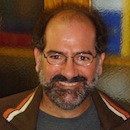Advisory Board and Editors Paleontology

Virginia Abdala
Professor of General Biology at the Facultad de Ciencias Naturales and Dean of the same faculty at the Universidad Nacional de Tucumán, Argentina. Researcher at CONICET and member of the Instituto de Biodiversidad Neotropical (UNT-CONICET) in Tucumán, Argentina.

Shaw Badenhorst
I am a zooarchaeologist at the Evolutionary Studies Institute of the University of the Witwatersrand in Johannesburg, South Africa. I analyse animal remains (bones and teeth) from archaeological and fossil sites. I have studied animal remains from South Africa, Lesotho, Swaziland, Mozambique, Zimbabwe, Botswana, Malawi, Namibia, Canada (British Columbia) and the USA (Southwest). My focus of my research is on the origins of hunting, the spread of livestock, and taphonomy.

Brian L Beatty
Dr. Brian Beatty is a comparative anatomist, paleobiologist at New York Institute of Technology. He is especially interested in convergent/unique evolution of aquatic amniotes to similar physiological constraints, as well as surface metrology and its relationship to underlying microstructure of bone, skin, and endothelia.

Rüdiger Bieler
Curator (research professor) in the Integrative Research Center, Field Museum of Natural History, Chicago and Member of the Committee on Evolutionary Biology, University of Chicago
Research interests include evolutionary systematics, biogeography, comparative morphology, and taxonomy, with special focus on marine Mollusca, especially Gastropoda and Bivalvia. As a “museum person,” he is particularly interested in the development and application of organismal, collections-based research, ranging from extensive new field surveys and large-scale specimen and data management issues, to the integration of morphological, paleontological, and molecular data to address biological research questions. He recently served as lead PI of the Bivalve Assembling-the-Tree-of-Life (BivAToL.org) effort and is involved in coral reef restoration projects and associated invertebrate surveys in the Florida Keys. Past offices include service as president of the American Malacological Society and of the International Society of Malacology (Unitas), and he currently a member of the steering committee of WoRMS (marinespecies.org) and a chief editor in the MolluscaBase.org effort.

Barry W Brook
Barry Brook, a conservation biologist and modeller, is an ARC Australian Laureate Professor and Chair of Environmental Sustainability at the University of Tasmania. Leader of the Dynamics of Eco-evolutionary Patterns (DEEP) research group and the UTAS node of CABAH, Barry is a highly cited scientist, having published three books, over 350 refereed papers, and many popular articles. His awards include the 2006 Australian Academy of Science Fenner Medal, the 2010 Community Science Educator of the Year and 2013 Scopus Researcher of the Year. He focuses on global change biology, ecological dynamics, paleoenvironments, energy systems, and statistical-simulation models.

Julieta Carril
Dr. Julieta Carril is a researcher at the CONICET (National Scientific and Technical Research Council), Argentina. Working at the Laboratory of Histology and Descriptive, Experimental and Comparative Embryology (LHYEDEC), Faculty of Veterinary Sciences, National University of La Plata, Argentina. Her research focuses on the role of developmental reprogramming processes in the morphological evolution of Neornithes birds. Dr. Carril is also a member of the Avian Biomorphodynamic Research Group (ABRG)

Luis M Chiappe
Vice President for Research and Collections, and Director of the Dinosaur Institute, at the Natural History Museum of Los Angeles County. Adjunct Professor of the University of Southern California. Research Fellow of the Chinese Academy of Geological Sciences. J. S. Guggenheim Fellow and recipient of the Friedrich Wilhelm Bessel Research Award of the Humboldt Foundation.

Julia A. Clarke
Julia Clarke is a paleontologist and evolutionary biologist at The University of Texas at Austin. She is also a John A. Wilson Centennial Fellow in Vertebrate Paleontology and a member of the Graduate Faculty in Ecology, Evolution, and Behavior at UT.
She has a Ph.D. from the Department of Geology and Geophysics at Yale University and a B.A. (comparative literature and geobiology) from Brown University. She currently serves as co-editor-in-chief of the Journal of Anatomy and is an associate editor of Paleobiology. She has published numerous technical papers, including 9 in Nature or Science, and has been recognized for excellence in research, undergraduate teaching, and outreach.

Hugo Corbí
Dr. Hugo Corbi is a marine geology researcher (micropaleontology and sedimentology) currently working at the University of Alicante (Spain). Highly motivated in developing scientific and outreach studies related to geological and paleontological heritage, sedimentology, reef environments, Messinian Salinity Crisis, paleoenvironment interpretation, biostratigraphy and foraminiferal taxonomy.

Kenneth De Baets
I am a paleobiologist. My main research focuses on reproductive strategies and macroevolution, particularly on the contributions of biotic interactions (e.g., parasitism) and abiotic factors (e.g., climate) in controlling evolutionary and diversity patterns. To this end, I work with a variety of approaches that combine research on fossil molluscs, coprolites and fieldwork with large-scale quantitative analyses. Other interests are quantitative methods to study biostratigraphy, intraspecific variability and paleobiology in general. My main taxonomic expertise is on invertebrates, mainly (extinct) cephalopod mollusks and parasitic helminths. The promotion of diversity and young scientists as well as scientific collaboration and reproducibility in paleontology are particularly close to my heart.

Robert Druzinsky
I am an evolutionary biologist and functional morphologist with diverse interests. My major focus is on the evolution of the masticatory apparatus of mammals, particularly rodents. I am also working on an anatomy ontology for muscles of the head and neck in tetrapods. I also study the biomechanics of teeth, as well as the neurophysiology of mastication.

Brandon P Hedrick
Assistant Professor of Biomedical Sciences, Cornell University
An evolutionary biologist, paleobiologist, and ecologist primarily interested in comparative morphology. I work across the vertebrate tree including reptiles, amphibians, and birds, but specialize on bats and dinosaurs.

